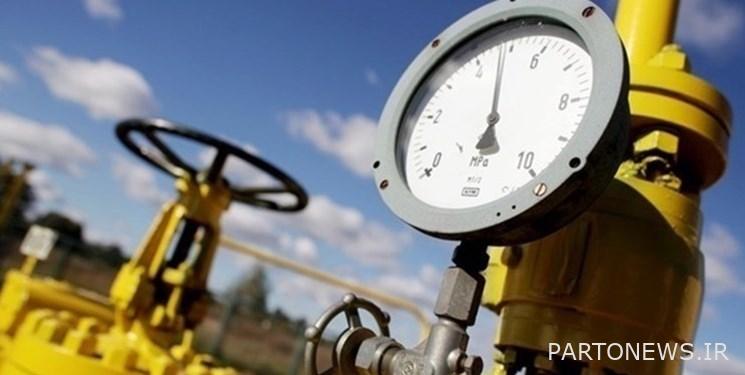A jump in gas prices in anticipation of misuse / hidden subsidies for gas in the upper deciles will be zero?

According to the economic correspondent of Fars News Agency, with the approach of winter, gas consumption in the country, especially in the domestic sector, has increased significantly. to the Said Minister of Oil Javad Oji currently consumes about 490 million cubic meters of gas per day in the domestic and commercial sectors, while in the same period last year this figure was 350 million cubic meters per day.
In other words, gas consumption in the domestic and commercial sectors has increased by 140 million cubic meters compared to last year, which is equivalent to a 40% increase in gas consumption in this sector. This is while the total gas consumption in the country has increased by about 10 to 12 percent compared to last year. As a result, according to the statistics of the Ministry of Oil, the most effective sector in increasing gas consumption in the winter of this year will be the domestic and commercial sectors.
The increase in gas consumption in the domestic and commercial sectors has been so great that before the arrival of winter, the Ministry of Oil has had problems in supplying gas to various sectors, so that Mostafa Rajabi Mashhadi, spokesman for the electricity industry in interview With Fars News Agency, he has pointed to a 50% reduction in gas deliveries to power plants in the past few days.
* Three simple suggestions to people to prevent gas wastage in the home sector
Continuation of the unbridled growth of gas consumption in the domestic sector will definitely lead to a cold and difficult winter for the people of the country. As a result, it is necessary for the Ministry of Oil to pursue two policies, “price” and “non-price”, in order to attract the cooperation of the people for the optimal consumption of gas in the domestic sector.
The policy of “non-price” refers to culture-building through the production of media content, which can be defined in terms of the optimal use of gas in the domestic sector in various forms. In this area, although some concerns have been observed by the Ministry of Oil and the National Gas Company, but apart from a few short clips, no significant action has been taken to accompany the public opinion in the optimal consumption of gas in winter.
In the meantime, it is enough for the public relations of the Ministry of Oil and Radio and Television to share three simple recommendations of the Minister of Oil, Javad Oji, with the people in various formats. The Minister of Oil, on the sidelines of an intrusive visit to the dispatch center of the National Gas Company, made three recommendations for optimal consumption Offers that includes:
- People keep the temperature of the house between 18 and 19 degrees and this temperature should not increase too much.
- Dear people, please turn off the heating appliances after leaving the house and when they are not at home.
- Dear people, in winter, wear relatively warm clothes at home.
About the three recommendations of the Minister of Oil, Mohsen Mazlum Farsi-Baf, Director of Research and Technology of the National Iranian Gas Company explains: «The comfort temperature in Iran is 24 to 25, while in Japan and in most European countries the comfort temperature is around 20 and below 20 degrees, we pay a high price for the 4-5 more comfort temperature we define.».
In general, attracting people’s cooperation for optimal gas consumption in winter is one of the strategies defined under non-price policies. In addition to this solution, it is necessary for the Ministry of Oil to pursue the optimization of gas consumption through price solutions.
* Domestic gas price tariffs have not changed since 1994
Among the pricing strategies for optimizing gas consumption are “reform of gas price steps” and “incentives for the low-consumption and penalties for the low-consumption and the high-consumption”, a policy that seems to be currently on the agenda of the Ministry of Oil. Now it’s finalizing your plan on this.
The last time that the gas price stairs in the domestic sector were changed was in 1994, and since then, no action has been taken to correct the gas price stairs. This has led to the wealthy deciles of the society, who often have very high gas consumption, never paying attention to changing their consumption culture, and even encouraging high gas consumption by receiving more hidden subsidies.
Minister of Oil Javad Oji about the ministry’s price plan to control gas consumption in the domestic sector explains“Cabinets passed resolutions that, according to these resolutions, we will not have any increase in the price of domestic gas for the general public. “But for consumers who consume gas, who make up 25 percent of the country’s population, but who account for more than 50 percent of gas consumption, there are penalties.”
* Details of the Ministry of Oil’s plan to fine subscribers for consuming gas
It is rumored that the Ministry of Petroleum’s plan to impose fines on gas-consuming subscribers is defined as follows: In temperate regions, in the first 4 steps of gas consumption stairs (consumption 0 to 400 cubic meters per month) and in cold regions, in the first 5 steps of gas consumption stairs, no price change takes place. The first 4 or 5 steps of gas consumption include 75% of the total gas subscribers in the domestic sector.
Table 1 shows the gas price steps whose subscribers are not subject to price increase in green and yellow. Thus, according to the pricing policy of the Ministry of Oil, we will not see almost any price increase for the general public, because most of the lower and middle deciles of the society are included in this 75%.
Table 1- Climate gas tariffs for the domestic sector 3
According to the plan of the Ministry of Oil to control gas consumption, the price of gas in the middle stairs will increase with a gentle slope for the subscribers. But in the last rungs, the price of gas tariffs rises dramatically, so that the misuse of the last rungs literally heats up.
* Misuse recipients receive 22 times more hidden subsidies than first-tier domestic gas subscribers
Improving the price of the last steps of gas consumption, not only by controlling the gas consumption of high-consumption and low-consumption groups, reduces the severity of the gas shortage crisis in the winter ahead, but also leads to equitable distribution of gas subsidies among different deciles of society.
In a report entitled “Electricity and Gas Tariff Reform Plan for Home Subscribers”, the Network of Resistance Economics Analysts has calculated the amount of bills paid by subscribers in each of the consumption steps and the amount of hidden subsidies for gas received by each step (Figure 1).
Figure 1
As shown in Figure 1, the hidden subsidy for gas received by the last consumption subscribers (more than 1,200), who are also often high-income, is 22 times the hidden subsidy that the government pays to the first consumption gas subscribers (0 to 100). Also, the total hidden subsidy for gas received by the last 6 consumption steps is 2.5 times the hidden subsidy that the first 6 consumption steps receive.
Given the significant difference in hidden subsidies that the upper deciles of the society receive from gas consumption compared to other deciles, it seems that the proposal of the Ministry of Oil to increase the gas price in the high consumption steps not only controls the consumption of these groups but also prevents the inflow of subsidies. It hides in the pockets of people who are often rich themselves.
End of message /
You can edit this post
Suggest this for the front page
.

